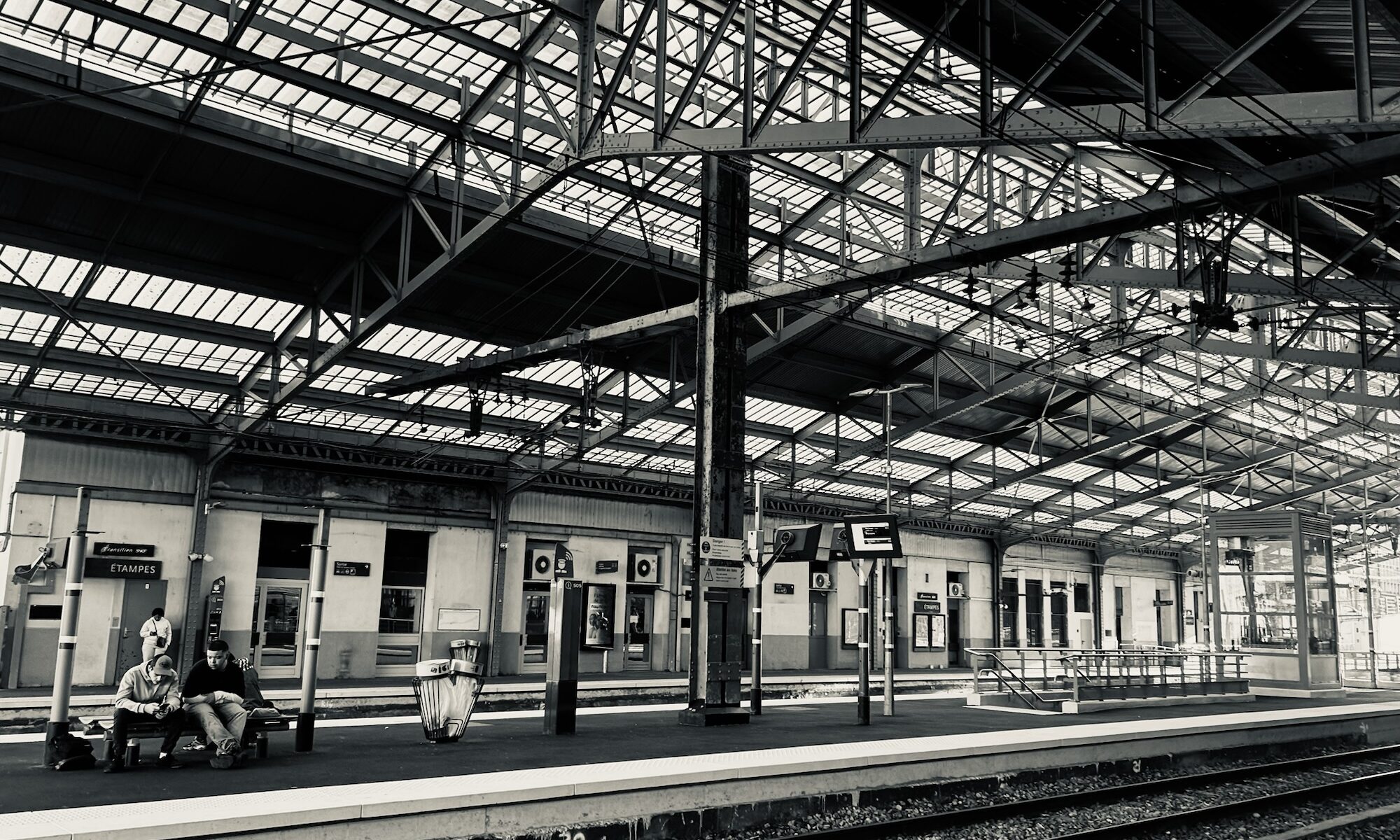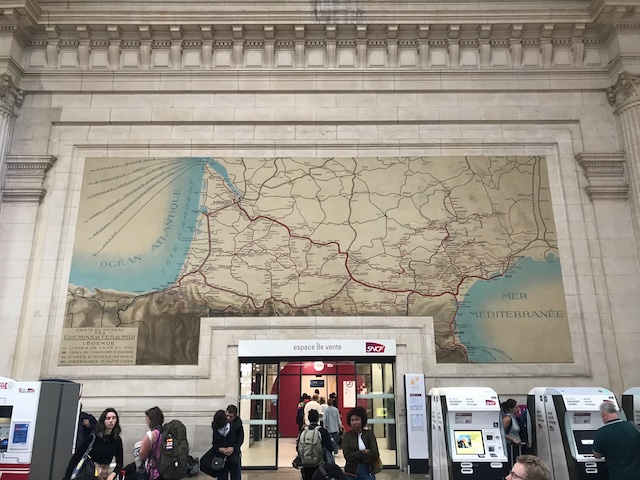I took this photo at Étampes station. It shows a nineteenth-century roof that spans four platforms with no internal columns. And then, right in the middle of that column-free space, stand the massive posts that support the electric cables — added in the 1920s.
It’s a clear clash of system goals.
The roof was built to create a grand civic space — a place that celebrated the station as a node of travel and encounter.
The cable gantry belongs to a different system altogether: it’s about maintaining a rigid, continuous grid for electrical power.
In the first, place is what matters.
In the second, continuity is what matters.
Retrofitting the roof to carry the cables would have been expensive, yes. But the network engineers could at least have designed special gantries for inside the station — ones that respected the goal of place while still meeting the goal of network.
The station architects began with a blank sheet of paper and could design more or less what they wanted.
The electrification engineers didn’t start with a blank sheet, but arguably designed as if they did.
We rarely start with a blank sheet of paper. Existing and new systems bring different goals. Our task as designers is to reconcile those goals through better design.


